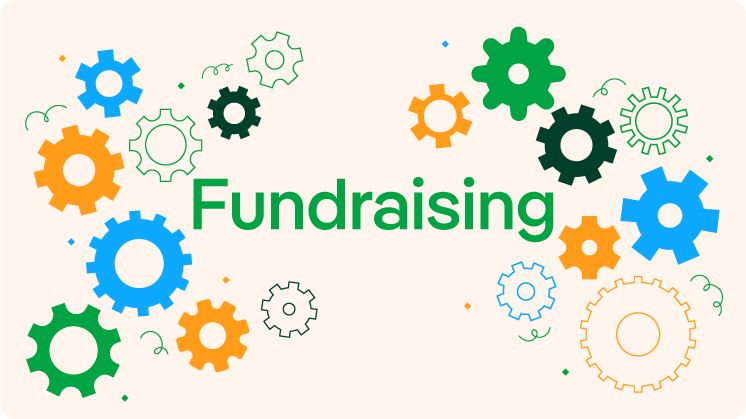Fundraising Consultant: Professional Guidance to Enhance Your Nonprofit's Fundraising
Fundraising Consultant: Professional Guidance to Enhance Your Nonprofit's Fundraising
Blog Article
The Role of Area Engagement in Nonprofit Fundraising: Structure Lasting Relationships for Lasting Support
Neighborhood engagement is increasingly identified as a crucial component of effective not-for-profit fundraising. By fostering genuine partnerships with local stakeholders, organizations can cultivate depend on and loyalty, which are necessary for sustainable assistance. However, the approaches and methods employed to engage communities vary widely, increasing vital questions concerning efficiency and effect. What are the most effective methods for growing these necessary connections, and how can nonprofits determine their success in this arena? Understanding these characteristics could substantially affect the future of fundraising efforts and the total goal of not-for-profit organizations.
Comprehending Neighborhood Engagement
Community interaction is a crucial part of successful nonprofit fundraising efforts. It refers to the approaches and activities that companies use to get in touch with their local communities, cultivating partnerships that are equally advantageous. Comprehending neighborhood interaction includes recognizing its multifaceted nature, which includes outreach, engagement, and partnership. Nonprofits have to recognize crucial stakeholders-- such as community members, regional services, and other companies-- to develop effective involvement methods.
Effective area engagement is predicated on energetic listening and responsiveness to the requirements and interests of the area. This process involves obtaining comments, understanding neighborhood characteristics, and making certain that the organization's goal straightens with local concerns. Involving the community can take different types, including public meetings, volunteer possibilities, and collaboration campaigns, each created to urge involvement and financial investment in the organization's objectives.
Furthermore, neighborhood involvement should be approached as an ongoing discussion instead of an one-time initiative. By fostering an inclusive setting where neighborhood voices are listened to and valued, nonprofits can build a strong structure for future fundraising undertakings. Eventually, a deep understanding of neighborhood interaction encourages organizations to develop authentic links that improve their total effectiveness and sustainability.
Benefits of Solid Relationships
Strong relationships created with community interaction return numerous advantages for not-for-profit fundraising initiatives. Primarily, these partnerships foster count on and trustworthiness, vital elements in motivating contributors to add. When possible supporters see a not-for-profit proactively associated with their community, they are a lot more most likely to rely on its objective and effect.

Additionally, these relationships promote effective communication. Nonprofits can leverage their connections to share tales of impact, updates, and requires, guaranteeing that supporters remain educated and engaged. This open line of communication not just enhances bonds but likewise urges word-of-mouth promo, expanding the nonprofit's reach.
Finally, solid area connections can draw in brand-new partners and sponsors. People and companies are a lot more likely to line up with companies that show meaningful community participation, offering additional resources and support that can dramatically enhance fundraising capacities. Thus, cultivating durable partnerships via community involvement is integral to a nonprofit's long-lasting fundraising success.
Approaches for Reliable Involvement
Just how can nonprofits effectively involve their neighborhoods to enhance fundraising efforts? Routine updates, involving material, and calls-to-action can galvanize neighborhood rate of interest and involvement.
2nd, holding community events, such as workshops, volunteer chances, or fundraising drives, promotes in person communication, enabling nonprofits to display their effect and initiatives. These occasions not only raise funds yet also grow relationships and permit community members to involve directly with the cause.
Third, applying tailored communication approaches can boost involvement. Tailoring messages to details donor sections based upon rate of interests and past payments fosters a feeling of belonging and investment in the company's mission.
Lastly, creating partnerships with local businesses and community leaders can intensify outreach efforts. Joint initiatives can boost visibility and integrity, demonstrating a collective dedication to the neighborhood's well-being. By incorporating these strategies, nonprofits can construct long lasting relationships that enhance fundraising initiatives and drive sustainable support.
Determining Interaction Success
While involving the community is critical for effective not-for-profit fundraising, gauging the efficiency of these engagement efforts is just as vital. Establishing clear metrics enables companies to evaluate just how well they are getting in touch with their audience and accomplishing their fundraising goals. Secret efficiency indications (KPIs) such as contributor retention prices, volunteer engagement fundraising consultant levels, and engagement on social networks systems provide substantial data for evaluation.

Consistently examining these metrics allows companies to pivot their methods when essential, making certain that area engagement remains lined up with their general goal. Furthermore, sharing these outcomes with stakeholders promotes transparency and develops depend on, motivating more neighborhood participation. Inevitably, a durable measurement structure not only educates future fundraising campaigns but additionally enhances the relationship in between the nonprofit and its fans, laying the groundwork for lasting success.
Study in Community Effect
Many study illustrate the profound effect that area engagement can have on not-for-profit fundraising success. One significant instance is the "Something to chew on" effort, where a neighborhood food bank partnered with companies and institutions to host neighborhood suppers. These events not only increased funds but likewise promoted a feeling of belonging among individuals, significantly raising benefactor retention rates.
An additional compelling situation is the "Eco-friendly Spaces Job," which entailed local homeowners in the revitalization of metropolitan parks. This effort not only garnered financial support from local organizations yet likewise cultivated a volunteer base that contributed to continuous maintenance and shows. The sense of ownership and satisfaction amongst area members translated right into continual contributions.
In the realm of arts, the "Art for All" project effectively engaged neighborhood musicians and clients to create collective art setups, causing increased exposure and donations for a neighborhood arts not-for-profit.
These examples highlight that when nonprofits focus on area participation, they can develop lasting partnerships that improve fundraising initiatives, making certain sustainable support and cultivating a lively community culture. Such instances demonstrate that community engagement is not just a strategy yet a necessary column of nonprofit success.
Verdict
To conclude, community interaction is important to the success of nonprofit fundraising initiatives. By fostering strong relationships with regional stakeholders, organizations enhance count on and trustworthiness, leading to enhanced contributor retention and loyalty. Carrying out reliable engagement methods and gauging their influence makes certain that nonprofits can thrive and adjust. Inevitably, a durable foundation of area support not just amplifies fundraising potential but additionally cultivates a society of collaboration, essential for accomplishing lasting organizational objectives and maintaining meaningful effect.
Nonprofits need to recognize vital stakeholders-- such as community members, neighborhood services, and other organizations-- to develop reliable interaction approaches.

In conclusion, neighborhood engagement is indispensable to the success of nonprofit fundraising efforts.
Report this page